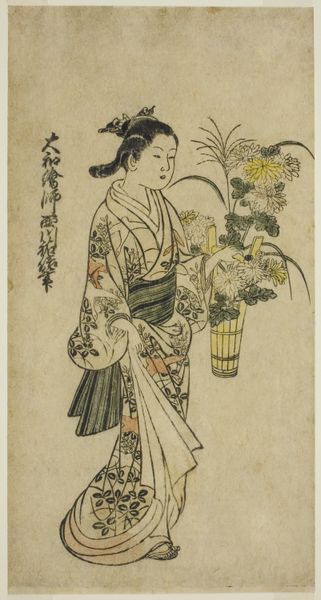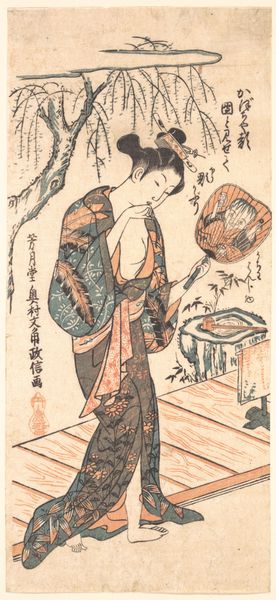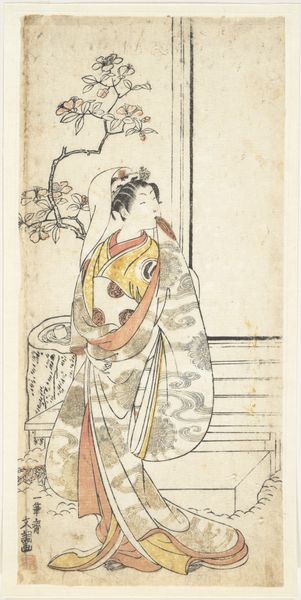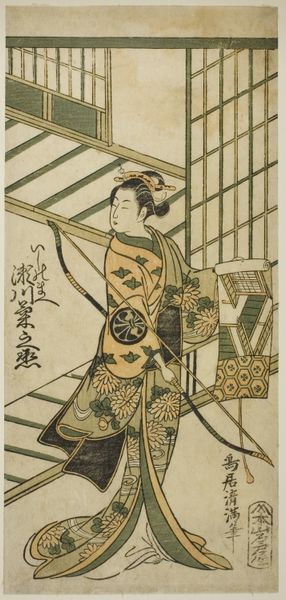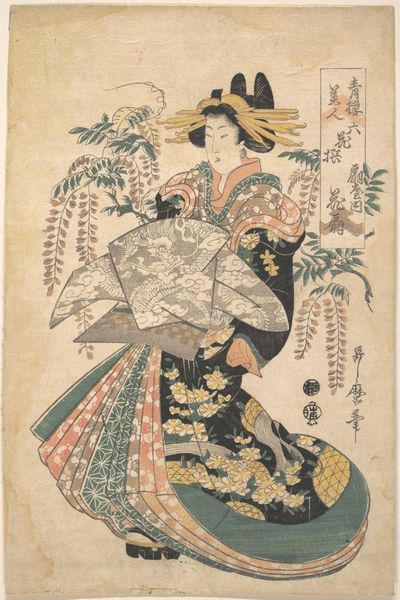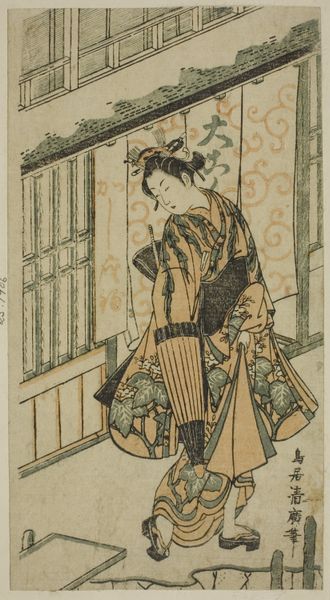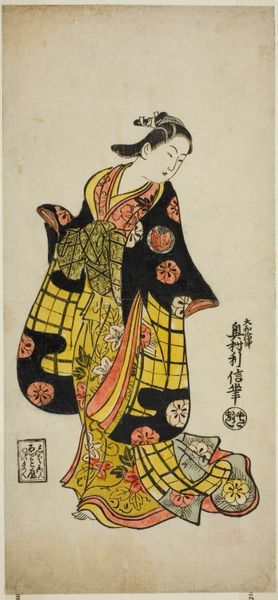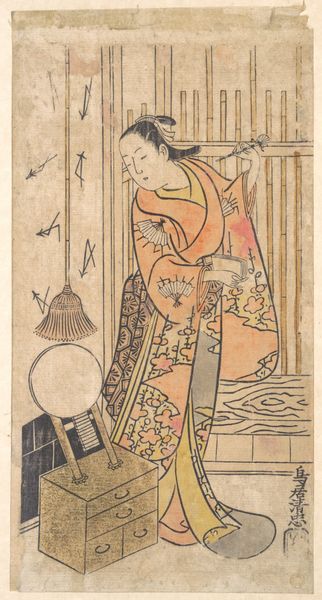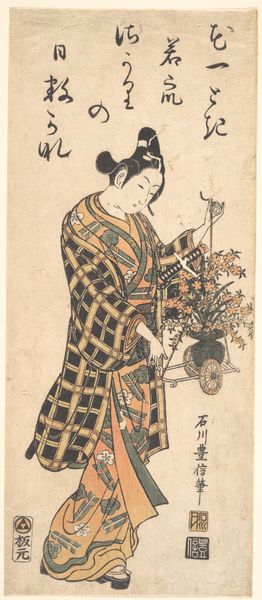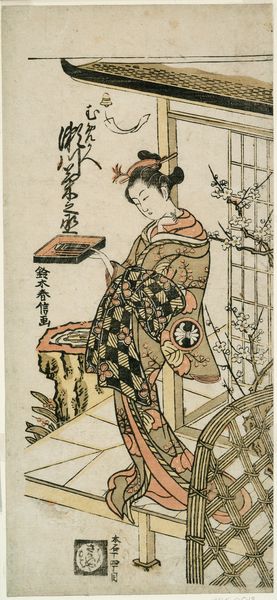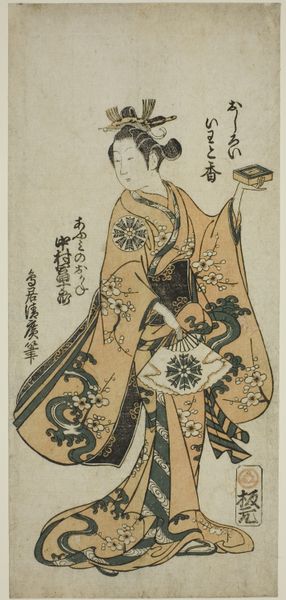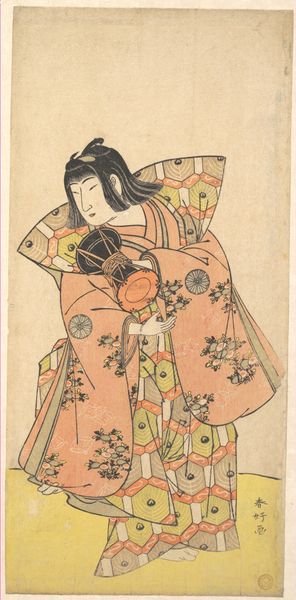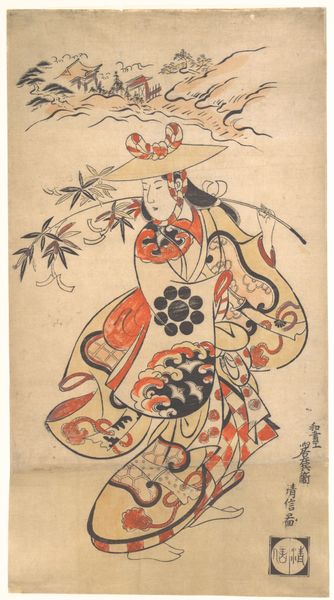
#
toned paper
#
quirky sketch
# print
#
pen sketch
#
asian-art
#
japan
#
cartoon sketch
#
personal sketchbook
#
ink drawing experimentation
#
pen-ink sketch
#
sketchbook drawing
#
watercolour illustration
#
sketchbook art
Dimensions: 27.2 × 14.3 cm (10 11/16 × 5 5/8 in.)
Copyright: Public Domain
Editor: This woodblock print, "The Actor Sanjo Kantaro holding a pipe" by Torii Kiyonobu I, dates back to about 1720. There’s something so charming and immediate about its lines. It almost feels like a sketch rather than a formal portrait. How do you interpret this work within its historical context? Curator: It’s interesting you see it as a sketch. Kiyonobu, working during the early Edo period, was instrumental in shaping the image of actors, which directly influenced their public persona and, by extension, the theatrical world. Prints like these weren't just art, but promotional material, carefully constructing celebrity. Editor: Promotional? So this print had a job to do! Curator: Precisely. Consider how this image would circulate – sold to fans, displayed in shops. The artist wasn’t merely capturing likeness; he was selling an image, a brand. That flamboyant pose, the striking patterns on the kimono… It all contributes to the actor's larger-than-life presence, influencing public perception and contributing to the development of 'celebrity' culture in Edo society. Notice, how does it relate to what was happening politically? Editor: You're saying it wasn't just about art; it was about the social and economic power structures at play. How the art supported and reinforced the cultural ideas around entertainment? I hadn't considered that so directly before! Curator: Exactly! This print is a fantastic lens through which to examine the interplay of art, commerce, and the construction of fame in 18th-century Japan. The style became its own genre. Editor: That's really changed how I see it. It’s more than just a portrait, it's a historical artifact that was designed to have a socio-economic function in society. Curator: Precisely. Art never exists in a vacuum. It’s embedded within cultural, social, and economic networks. Hopefully, you have gained better insight on the piece and the period in general.
Comments
No comments
Be the first to comment and join the conversation on the ultimate creative platform.
